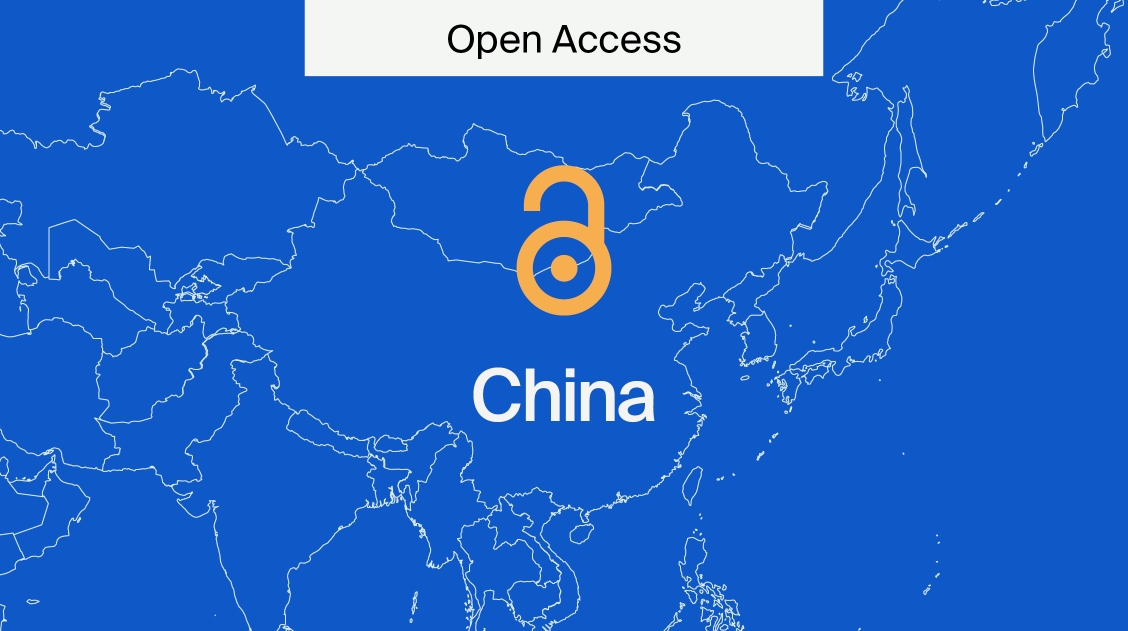
Open Access in China
In 2020, China became the leading producer of research articles. Now, it’s experiencing a “substantial growth rate in OA [Open Access] publication”. This growth is supported by the State’s commitment to research and development and policy “requiring the promotion of open science”. Open Access in China is a model for the rest of the world.
“Open science” is used interchangeably with “Open Access”. Here, we outline the history of the Chinese government’s mandates and its current policies for those looking to submit their research or to read it.
Open Access is the new paradigm
Open Access refers to a publishing model for scholarly research that makes information immediately available to readers at no cost. This research is also often free to reuse for scholarly purposes.
The benefits of publishing Open Access include more citations and a greater impact, reaching a wider audience, advancing scientific innovation, retaining copyrights, and increasing the potential for collaboration and recognition. Open Access can also help institutions like universities and research agencies in low- and middle-income countries by removing any price barriers to accessing academic research.
History of Open Access in China
China has gradually increased the requirements for Open Access publishing. Here is a brief history of Open Access in China:
- 2003: The Center for Science and Technology Development of the Ministry of Education launched the academic preprint exchange platform Sciencepaper Online.
- 2006: The Ministry of Science and Technology and the Ministry of Finance jointly issued a plan requiring “the establishment of standardized and sound project data and sci-tech report archives”. This established the framework for China’s developing Open Access knowledge base and platforms.
- 2008: The 8th Berlin Conference on Open Access was held in Beijing.
- 2015: The Natural Science Foundation of China (NSFC) issued the Implementation Rules of Open Access Policy for Basic Research Repository, launched its basic research repository, and collected the full text of NSFC-funded articles.
- 2020: Organizations across China signed the Open Access 2020 Initiative.
Since 2003, there have been gradual developments in China’s Open Access framework, with repositories and platforms being developed consistently. Alongside this, plans and initiatives such as those in 2006 and 2015 highlight the desire to streamline the design of these platforms and create a solid foundation for Open Access in China.
Cooperation is clearly important, and this extends internationally. China has become a hub for Open Access conferences such as the Berlin Conference in 2008.
Current Open Access laws in China
At the end of 2021, the Law of the People’s Republic of China on Scientific and Technological Progress was revised. Basically, this paper outlines the State’s view that there must be a sound foundation for scientific and technological (S&T) research that can be put to practical use. This requires openness.
As such, the paper outlines that there must be solid evaluation systems in place, basic research bases must be strengthened, and benefit-sharing mechanisms must be established.
To support this, the paper describes how the “State shall strengthen academic journal construction and improve mechanisms for the exchange of research papers and S&T information, to promote the development of open science, and encourage the exchange and dissemination of science and technology”.
The Chinese policy is less strict than the USA’s. The USA mandates that all federally funded research be made Open Access by the end of 2025. The Chinese policy requests that institutions “promote the development of open science” for now. This language resembles the memorandum that preceded the USA’s mandate, so it is predicted that China will introduce responsive mandates.
Presently, key institutions across China, including the National Science Library, the National Science and Technology Library, and the Natural Science Foundation of China, support Open Access. The State aims to establish consistent policies across government agencies. Thus, the 2021 paper shows the framework being laid out for a more encompassing embrace of Open Access across institutions. This is like Plan S, which Chinese institutions support.
China’s Open Access statistics
China has seen a steady decline in articles published as subscription-only and increase in those published as Open Access. Here are some statistics from Scopus:
- 2011: 91% of articles were subscription-only, 2% were green Open Access, and 3% were gold Open Access.
- 2016: 76% of articles were subscription-only, 3% were green Open Access, and 15% were gold Open Access.
- 2021: 63% of articles were subscription-only, 4% were green Open Access, and 27% were gold Open Access.
Evidently, subscription-only articles decreased by nearly 30% over the 10-year period, while gold Open Access conversely increased by 22%. Meanwhile, green Open Access remained consistent. Between 2017 and 2020 alone, China published 800,921 academic papers in an Open Access format.
Future trends
In 2023, as the leading publisher of academic research, China is pursuing “self-reliance”. Therefore, the State will be establishing consistent policies across government agencies, including those related to Open Access.
Additionally, it will want to ensure that Chinese people can access the research that is supported by Chinese funding and produced by Chinese academics. For that reason, “Open Access is a matter of priority in China”.
Value of Open Access
All articles published by MDPI are made immediately available worldwide under an Open Access license. This means:
- Everyone has free and unlimited access to the full text of all articles published in MDPI journals;
- Everyone is free to re-use the published material if proper accreditation/citation of the original publication is given;
- Open Access publication is supported by the authors’ institutes or research funding agencies by payment of a comparatively low Article Processing Charge (APC) for accepted articles.
Researchers can satisfy China’s developing Open Access policy and pre-empt any stricter legislation by publishing in an MDPI journal. Alternatively, if you want to publish an early version of your article, try Preprints, our service for publishing early versions of research that are not peer-reviewed and report on either ongoing or complete research.
Open Access makes vital information accessible to all readers and researchers and brings together scholars from across the world. Thus, it is ideal for tackling global challenges such as climate change and cancer research that require urgent and coordinated attention.
Evidently, China is leading Open Access policy. Also, click here if you want to learn more about Open Access around the world.










